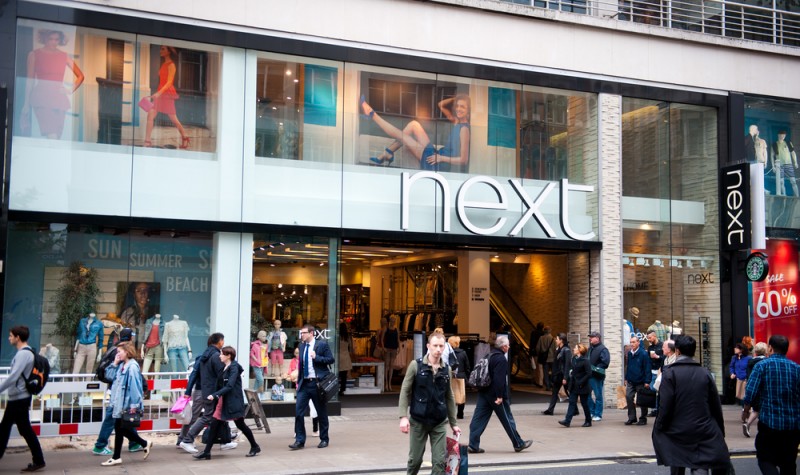Where next for Next Plc?

Looking at the workings of Next (NXT) financial reports reminds me of those moments in the Antiques Road Show when the affable clocks expert opens the back of an 18th-century clock to reveal a still perfect working mechanism. Next is a similarly perfect mechanism for producing sales, earnings, dividend and cash growth. It will not remain eternally perfect but it is still performing that way, to judge from a glance at the year’s results to end January 2015. You can see that this is a company which has reportedly grown dividend payments by nearly 18% per annum during the last five years, achieved earnings growth of a similar amount, and seen its share price rise by a total of 233%, in contrast to the FTSE 100 Index’s modest growth of a near 19% over the same period.
Dividends paid out last year amounted to £434 million, including a one off special cash dividend reflecting operationally superfluous, accumulated operational cash flow (up from £165 million the year before and £148 million the year before that). If you add the £138 million in share buybacks last year, ordinary shareholders got cash from the company totalling £572 million, which arithmetically, is about 5.3% of the current market cap. The special dividend is not expected to be repeated because last year the Next share price did not justify buying shares back. Was that because the share price was too high and the dividend yielding too little (shareholder logic), or because the share price was too low and yielding too much? Logic would suggest the former.
In summary, retail outlet sales in the year to end January 2015 increased 4.8%; Directory sales rose 12.1% (Directory sale are now more than two thirds of retail sales); and total group sales at just over £4 billion, were up 7.6%.
In terms of profitability, Retail profit rose by 10.4%; Directory profit by 5.1%; and total operating profit by a reported 12.3%. Underlying earnings increased 14.7% and the ordinary dividend payment was hiked 16.3%, for a total cost of £129 million.
All the more surprising is that the Marks & Spencer share price has increased significantly more than the Next share price during the last six months. The answer is that it tells us more about the market and Marks & Spencer than it does about Next. The Marks share price rose 41% and the Next share price by a ‘mere’ 8%.
So, where now? The management still sound confident about the company and the business model. Current market consensus forecasts estimate further growth in top line sales revenue but little or no earnings growth this year and only 5% growth in earnings next year and 6% the year after that. The cautious stance means estimated earnings of 410p for this year, 430p for next year and 457p the year after, putting the shares on price to forecast earnings ratios of 18.6 for this year just begun, 17.7 for next year and 16.7 for the following year to end January 2017. They do not estimate a special dividend again, so the estimated dividend yields are 2.4% for next year and 2.6% for the year after that.
Technically, the share price is getting close to a long term trend support (have a look) and still looks to be heading north. One wonders why consensus forecasts of earnings are so modest. The rating is for earnings growth but the consensus forecasts are reluctant to see it.
I like the idea of the smart switch from Marks to Next. Next have a long track record for delivery of growth and returns. But wait a little! If market sentiment weakens in April and May, there may be a better buying opportunity. A hung Parliament could weaken sterling and sentiment towards sterling assets, until markets gets used to such a thing – if it happens. That could prove an ideal time to be looking at Next shares again, hopefully lower than they are at the moment.
Comments (0)